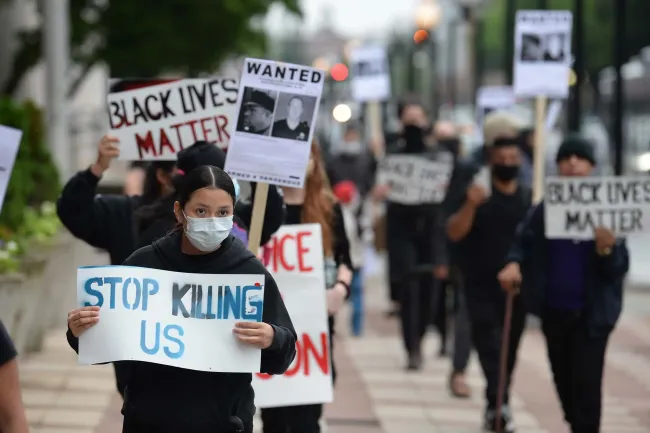Can You Be Racist to Your Own Race? Unpacking Internalized Racism
Racism is often associated with conflicts between different racial groups, such as white supremacy, colonial exploitation, or hate crimes. But what happens when prejudice is directed inward? Can individuals hold racist attitudes toward their own racial or ethnic group? This question brings us to the concept of internalized racism—a complex phenomenon shaped by systemic oppression and cultural conditioning. Let’s explore what internalized racism is, how it manifests, why it happens, and how we can address it.
1. What Is Internalized Racism?
Internalized racism occurs when members of marginalized racial groups unconsciously absorb and adopt the racist beliefs, stereotypes, and hierarchies upheld by dominant cultures. Sociologist Karen D. Pyke defines it as the "internalization of racial oppression by the racially subordinated." This internalization can lead to self-devaluation, adherence to harmful beauty standards, and even discrimination against one’s own community.
Examples include:
- Belief in Eurocentric standards of beauty: Favoring lighter skin or Eurocentric features, which may lead to practices like skin bleaching or hair straightening.
- Stereotyping within one’s own group: Labeling others as "too ethnic" or accusing them of "acting white."
- Denial of systemic racism: Downplaying or rejecting the existence of systemic oppression to align with dominant cultural narratives.
2. How Internalized Racism Manifests
Self-Image and Beauty Standards
One striking example of internalized racism is the "doll experiment" conducted by Kenneth and Mamie Clark in the 1940s. Black children often attributed positive traits like "good" and "pretty" to white dolls while associating Black dolls with negative traits. This preference for whiteness continues to influence beauty standards globally, fueling industries like skin-whitening creams in Asia and hair relaxers in Black communities.
Colorism and Intra-Racial Discrimination
Colorism—prejudice based on skin tone—creates divisions within racial groups. For instance, darker-skinned individuals may face ridicule or exclusion within their own communities, as illustrated by personal accounts like Jodianne’s experience of being mocked for her dark complexion. Similarly, terms like "whitewashed" or "sellout" are often used to question the cultural authenticity of those perceived as distancing themselves from their racial identity.
Stereotype Threat and Performance
Internalized racism can also contribute to "stereotype threat," where individuals underperform in academics or the workplace due to fear of confirming negative stereotypes about their racial group. Research shows this can significantly impact the success of marginalized groups.
3. The Systemic Roots of Internalized Racism
Internalized racism is not an individual failing but a product of systemic oppression. Historical forces such as colonialism, slavery, and biased media portrayals have devalued non-white cultures while elevating whiteness as the ideal. Examples include:
- Native American communities: Forced assimilation in boarding schools ingrained narratives of inferiority, leading to cycles of violence and substance abuse.
- Asian Americans: Some may distance themselves from cultural traditions to avoid being stereotyped as "Fresh Off the Boat" (FOB), a reaction to mainstream societal bias.
4. The Debate: Victim-Blaming vs. Systemic Accountability
Critics argue that focusing on internalized racism risks blaming victims for their oppression. However, scholars emphasize that it reflects broader societal conditioning, not individual weakness. For instance, Black Americans who unconsciously prefer white faces in Implicit Association Tests (IATs) are not "self-hating" but influenced by pervasive racial hierarchies embedded in society.
5. Breaking the Cycle: Healing and Resistance
Developing Critical Consciousness
Educator Paulo Freire’s concept of critical consciousness—awareness of systemic oppression and collective action—provides a pathway to healing. Movements like "Black is Beautiful" and Indigenous cultural revitalization work to counter internalized racism by fostering pride in marginalized identities.
Community Support and Representation
Safe spaces for dialogue allow individuals to process shared experiences and build solidarity. Similarly, diverse and authentic media representation challenges stereotypes and promotes empowerment. For example, discussions about casting light-skinned actors to portray darker-skinned historical figures highlight the need for inclusive storytelling.
Policy and Structural Reforms
Addressing internalized racism requires systemic change. Initiatives like desegregating schools, reforming curricula to reflect diverse histories, and promoting equitable access to opportunities can reduce biases over time.
Conclusion
Yes, individuals can internalize racism toward their own race—not out of malice but as a coping mechanism in a racially stratified society. Internalized racism reflects systemic inequities rather than personal failings. By fostering critical awareness, celebrating diverse identities, and pursuing systemic reforms, we can dismantle the narratives that perpetuate division. As writer Theodore R. Johnson observed after confronting his own biases through an IAT: "The first step to dismantling racism is recognizing how deeply it’s wired into us all."
